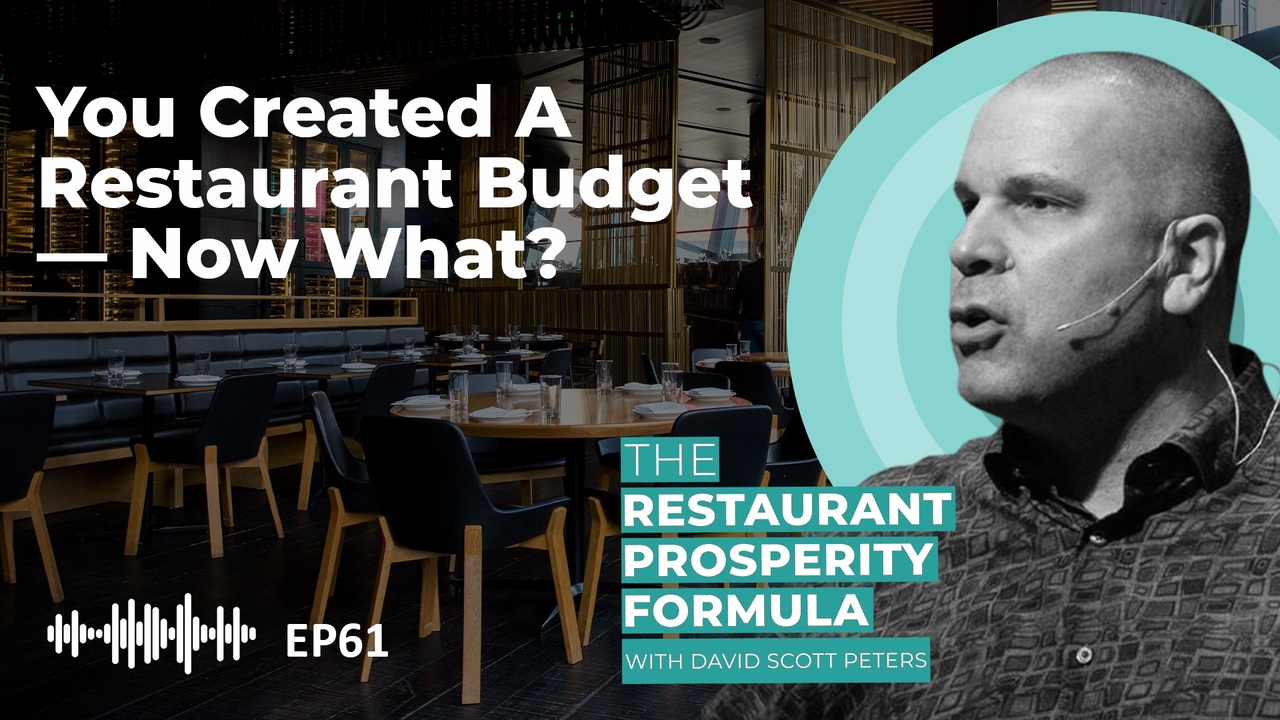How to Make Your Restaurant Budget Work for You Ep 61

I talk about the importance of restaurant budgets all the time. One of the best parts of my job as a restaurant coach is completing a budget with a member. It fills my heart with joy to see the hope they feel with a real-life plan to achieve their restaurant goals. Completing the budget process is the MOST important thing I do with each of my members in my Restaurant Transformation Intensive group coaching program. I’ve spent a lot of time teaching restaurant owners how to develop their budget. What I don’t spend a lot of time on are the common challenges restaurant owners face when it comes to their budget variance reports, when things don’t go according to the budget.
In this episode of my podcast, The Restaurant Prosperity Formula, I walk through a couple things you need to know about how I set up a restaurant budget, and the two most common challenges restaurant owners face on their budget variance report, both related to accrual accounting.
When I work with restaurant owners, one of the things that I say is the two most important systems that any restaurant should have are budgets and recipe costing cards. What are the two systems most restaurants never have? Budgets and recipe costing cards.
To be successful, you must have a plan for success. And that's what your budget is. See, the budget process is we ask for your trailing twelve months of numbers.
When I develop a restaurant owner’s budget, we find:
• Sales mix
• Sales by month,
• The cost of goods sold
• Labor cost by position
• Monthly expenses, both variable and fixed.
Then we build a budget template that says if you operate the next 12 months the way you did the last 12 months, here's how much money you're going to make or lose. And I want you to pick it up like it's a dead mouse. Not good enough. It's never good enough. Next, you decide what systems to put in place and how quickly you put them in place to achieve the numbers you desire.
For example, let’s say we find a 38% food cost. You decide to implement the key item tracker for a month. That will prevent theft and lower costs from theft. Then you implement the waste tracker to stop dumb mistakes. This lowers costs from waste. Next is the Restaurant Checkbook Guardian, where you tell your managers how much money they can spend on their next order to be within budget, allowing you to give up ordering without giving up your checkbook. You control costs on ordering with this system.
These systems aren't magic, they're work. But the reality is you put those three systems in place, I can almost guarantee you a two-to-three point drop in your food cost.
That's without creating recipe costing cards, no shelf-to-sheet inventory, no heavy lifting whatsoever. Just by preventing theft, stopping dumbass mistakes, and putting your team on a budget specifically in the kitchen. After two months – first month to learn and use the systems, the second to see it all work – you drop your food cost three points from 38% to 35%.
From there you start putting more systems in place to save more money, from recipe costing cards to my menu profitability monitor. You can engineer your menu, decide if prices need to go up, if you should reduce portions, change the menu altogether, there are several options.
Setting goals each month, deciding what you can change to move the needle, this will reduce your food cost to a level it needs to be in order to achieve the prime cost target you're shooting for.
Using your profit and loss statement every month, if you don’t hit your target numbers, you can use that data to look for where things went wrong. If managers aren’t following the systems, you can retrain them and hold them accountable. Maybe everyone did everything right and you need to change your budget.
Or, if you hit the numbers, you can decide what new systems to add to continue to build your profitability.
Either way, you put your plan into place to achieve the numbers you deserve. And the only way to do that is to have a budget variance that answers questions like:
• Where did I hit?
• Where did I miss?
• What do I need to change?
There is a lot that goes into the process of figuring it out, but one of the best things I do in my restaurant coaching program is work with each member one on one to develop their budgets. It is literally life changing.
Make sure to listen or watch this whole episode for an in-depth lesson on budgeting and using your budget variance report.
Click the podcast player above to listen in, or you can watch the video on YouTube, click here to download the latest episode.




